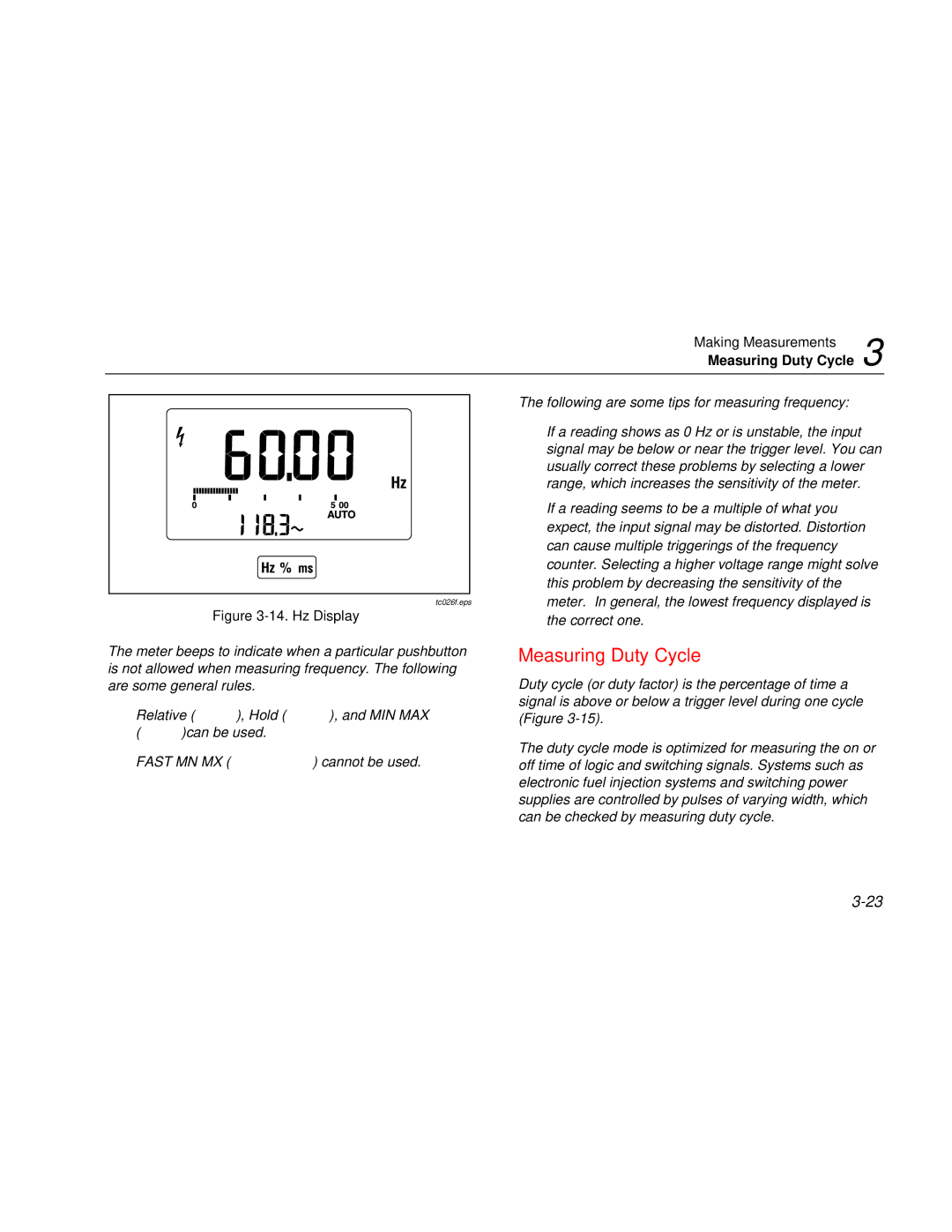
Making Measurements | 3 |
Measuring Duty Cycle |
The following are some tips for measuring frequency:
tc026f.eps
Figure 3-14. Hz Display
The meter beeps to indicate when a particular pushbutton is not allowed when measuring frequency. The following are some general rules.
•Relative ( D), Hold ( Q), and MIN MAX ( M)can be used.
•FAST MN MX ( O M) cannot be used.
•If a reading shows as 0 Hz or is unstable, the input signal may be below or near the trigger level. You can usually correct these problems by selecting a lower range, which increases the sensitivity of the meter.
•If a reading seems to be a multiple of what you expect, the input signal may be distorted. Distortion can cause multiple triggerings of the frequency counter. Selecting a higher voltage range might solve this problem by decreasing the sensitivity of the meter. In general, the lowest frequency displayed is the correct one.
Measuring Duty Cycle
Duty cycle (or duty factor) is the percentage of time a signal is above or below a trigger level during one cycle (Figure
The duty cycle mode is optimized for measuring the on or off time of logic and switching signals. Systems such as electronic fuel injection systems and switching power supplies are controlled by pulses of varying width, which can be checked by measuring duty cycle.
